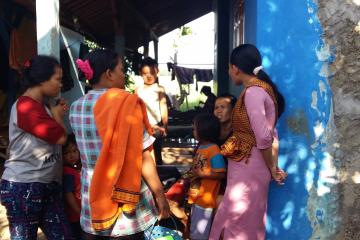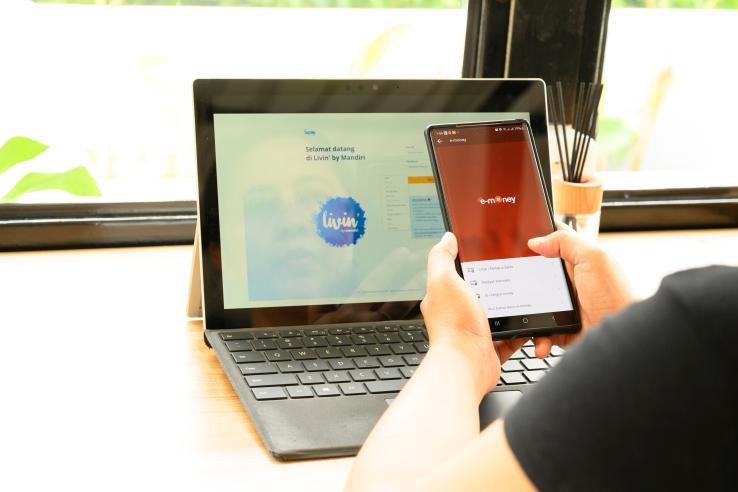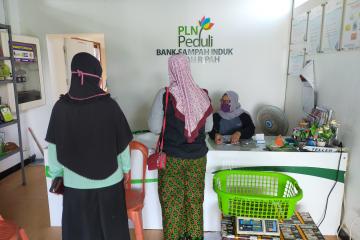
IFII Blog Series: E-commerce platforms as a path to women’s financial inclusion

E-commerce, one of Indonesia’s fastest-growing digital services sectors, offers promising opportunities for Indonesian micro, small, and medium enterprises (MSMEs) to increase sales and expand their customer base. It also has the potential to alleviate some barriers for women business owners by offering flexibility for them to run their businesses from their homes and manage their schedules. However, the rapid rise of e-commerce in Indonesia could exacerbate existing inequalities if the digital readiness gap between women and men is not addressed.
How, then, should policymakers seek to encourage e-commerce adoption in a gender-inclusive manner? First, it is important to understand who is active in e-commerce. J-PAL Southeast Asia's Inclusive Financial Innovation Initiative (IFII) analyzed Indonesia’s 2020 Financial Inclusion Insights (FII) survey to understand the state of financial inclusion in Indonesia and assess the use of e-commerce among women business owners.
This blog summarizes our learnings about the challenges and opportunities to increase e-commerce adoption among women business owners and how e-commerce may offer pathways to increase the adoption of digital financial services (DFS).
The majority of women business owners do not use e-commerce, despite having the basic skills to do so
Women run the majority (61 percent) of MSMEs in Indonesia. However, many women-run MSMEs have not yet used e-commerce platforms, despite having the necessary basic competencies. Only 17 percent of women-run MSMEs have made a transaction (buying or selling) on an e-commerce platform. Considering that half of the women MSME owners are “digitally ready”—which means that they own a smartphone and can either download a mobile application or browse the internet—and just one-third of these have made a transaction on e-commerce sites, there is significant room to increase use.
E-commerce adoption lags behind the rates of social media platform usage for online selling, known as social commerce. Our analysis of the 2019 National Employment Survey (SAKERNAS) found that 58 percent of women who run MSMEs as their main occupation use social media to sell their products or services. This gap between social commerce and e-commerce adoption by women-run MSMEs suggests that e-commerce may present additional barriers to adoption, such as unfamiliarity and more restrictive processes (e.g., must have a bank account and processing quickly is required), that digital readiness alone cannot address. Alternatively, social commerce may be more useful for business owners focused on catering to local customers. More research is therefore needed to understand why women are not using e-commerce and whether easing barriers boost business activity.

However, the rate of e-commerce experience outpaces the rate of mobile e-money experience. The percentage of women-run MSMEs that have made a transaction on e-commerce platforms is significantly higher than the percentage that have used e-money (which stands at 11 percent). Furthermore, the rate of e-commerce is statistically similar to the percentage of women that have ever used microfinance or cooperative services (at 20 percent). Given e-commerce’s rapid growth in Indonesia, this suggests the platforms will play an increasingly important role in MSME growth in the future.
E-commerce may offer pathways to financial inclusion

There is a positive correlation between e-commerce experience and services that could boost financial inclusion, specifically the adoption of formal financial accounts, the usage of debit cards, internet banking, and mobile e-money, and knowledge of online financing. Women-run MSMEs with e-commerce experience are 30 percent more likely to have a formal financial account, almost two times more likely to have a debit card, 62 percent more likely to have internet banking and/or mobile e-money, and 53 percent more likely to have heard of online financing services than women-run MSMEs without e-commerce experience. More research is needed to understand whether this reflects selection bias (e.g. savvier businesswomen already use financial accounts more and also happen to use e-commerce) or whether e-commerce can indeed be a bridge to other services. This suggests that programs aimed at increasing e-commerce use may also bring additional benefits.
It is important to note that other factors may influence the adoption of e-commerce and other DFS, such as digital literacy, digital capabilities, internet infrastructure, and behavioral factors.
Boosting digital financial services adoption among women
Our analysis suggests that more research is needed to understand how much women-run MSMEs benefit from e-commerce and how to encourage those with high returns to adopt e-commerce and other DFS, including:
- How can we predict women-run MSMEs’ ability to thrive on e-commerce platforms?
- How does access to e-commerce change women’s business activity, their engagement in the labor market, and their use of DFS?
- How does e-commerce adoption impact women’s lives at home, in terms of decision-making power, stress, and their time spent on unpaid labor?
Indonesia’s National Women’s Financial Inclusion Strategy and the Ministry of Women’s Empowerment and Child Protection highlight women-run MSMEs as a key target for increasing women’s economic empowerment. Through providing high-quality evidence and gender lens training for financial inclusion program design and evaluation, IFII supports the Government of Indonesia in this mission. To learn more about IFII, visit our RFP page or contact [email protected].
Read the second blog in the series (English) (Bahasa Indonesia).
Related Content

IFII Blog Series: Applying a gender lens in measuring the impact of DFS on women’s empowerment

IFII Blog Series: Advancing inclusive digital financial services to empower women in Indonesia



